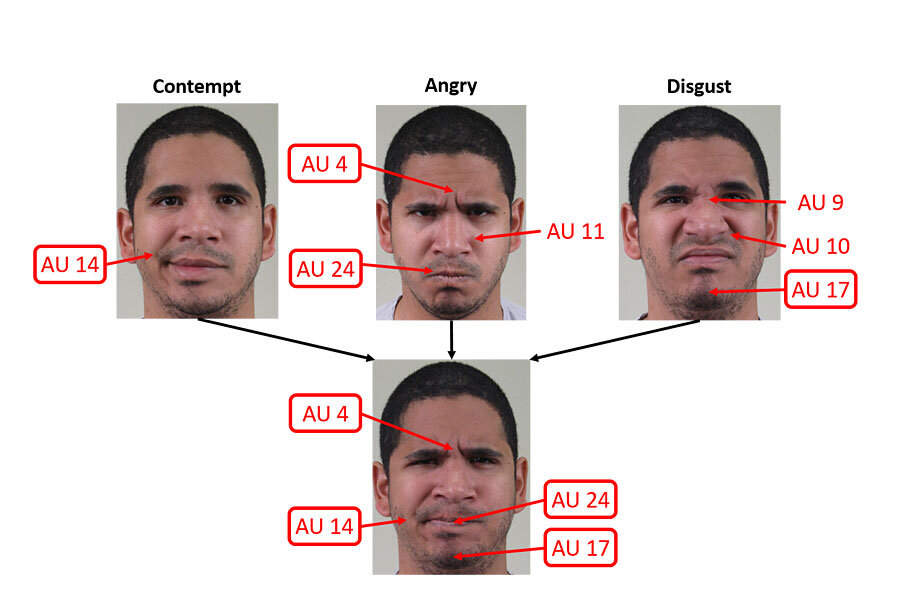What is the 'not face'? Everyone has one, say scientists.
Loading...
When speaking, your face may be saying more than you know, and it's speaking a language just about anyone can understand.
One particular facial expression transcends language barriers, researchers at Ohio State University found. They dubbed the universal expression the "not face" because it punctuates negative sentiments, much like the word "not."
The "not face" is a combination of a furrowed brow, pressed lips, and a raised chin. The researchers found that people make this expression when expressing a negation such as "I do not agree" or "I am not going to the party."
And this facial expression is independent of language. Subjects made the "not face" whether they were speaking English, Spanish, Mandarin Chinese, or American Sign Language (ASL), the researchers report in a paper published in the journal Cognition.
Not only did the research subjects make the "not face" when making negative statements, some of the ASL speakers also used the "not face" instead of signing the word "not."
The "not face" is a sort of facial grammatical marker, something that indicates the grammatical function of a phrase, like adding -ed at the end of a verb to change the tense, says study author Aleix Martinez, a cognitive scientist at Ohio State University.
And that makes this facial expression part of language, he says. "Grammatical markers are part of the grammar. The grammar is what defines human language," Dr. Martinez tells The Christian Science Monitor in an email. "Other forms of communication are not considered a language because they do not have grammar."
Discovering that the "not face" is universal could unlock the mysterious origins of human language.
"Language (i.e., grammar) is one of the most surprising cognitive abilities of humans," Martinez says. "Almost everything else we have can be traced back through evolution, except language. How’s that our closest living relatives do not have it? Do they have some components of it? Primates can communicate nonverbally, is that where language evolved from?"
"We hypothesize that the answer is yes," he says. "Our hypothesis is that facial expressions of emotion (which is a type of nonverbal communication) evolved into grammatical markers (i.e. language). This provides a viable evolutionary route for the development of human language."
To test for a facial grammatical marker, researchers filmed subjects as they had a conversation in their native language. Then they looked at the videos frame by frame to identify exactly which facial muscles were moving when.
The "not face" is a combination of three different expressions Martinez had identified in a previous study: anger, disgust, and contempt. The furrowed brow comes from anger, the raised chin is from disgust and the pressed lips is from contempt.
These illustrate the evolution of communication, says Martinez. "Facial expressions are assumed to have evolved for sensory regulation and as a protective mechanism. For example, disgust is thought to protect us from germs; note it involves closing the mouth, nostrils, and eyes. Anger contracts the muscles of the face, potentially protecting us from punches or in a fall," he says.
But expressions of disgust and anger have evolved to respond to less physical, or more "moral" scenarios, like when someone insults you or has an opinion you find repulsive, Martinez explains. So the "not face," the universal marker of negation, may be a compound of those moral expressions.








